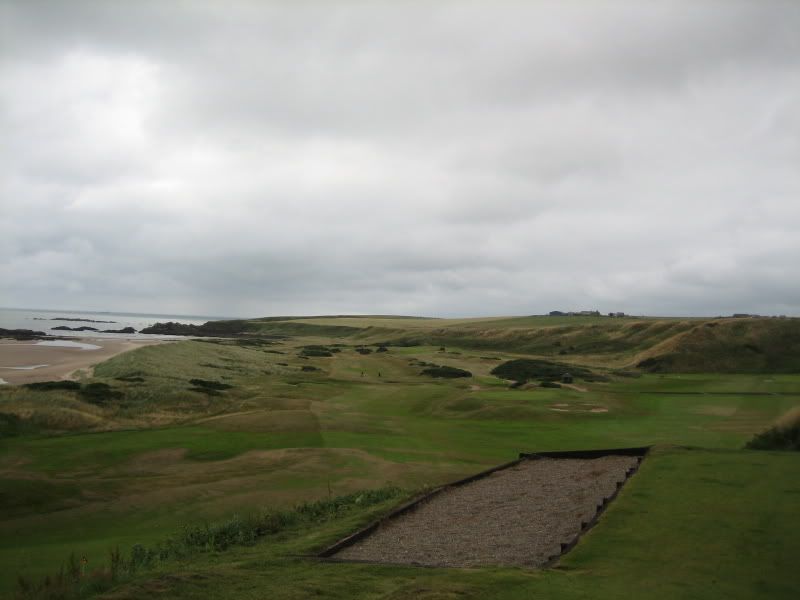As I anticipated, I was blown away by my first trip around Cruden Bay. The quality of the two par 5s - the 6th and the 13th - is remarkable. The day I played, the 6th was playing downwind in a stout breeze that would occasionally turn quartering. The 13th was playing dead upwind.
The 6th is hard against the dunes, and, as such, the winds tend to be a bit shifty. In any event, however, the fact that the holes play in opposing directions enhances the variety no matter the wind direction. In both cases, the tee shots are relatively innocuous affairs, and the real strategy begins following.
Is there a better pair?
#6 - 505 YardsThe elevated tee shot discloses nothing of the trouble and decisions that await the player.
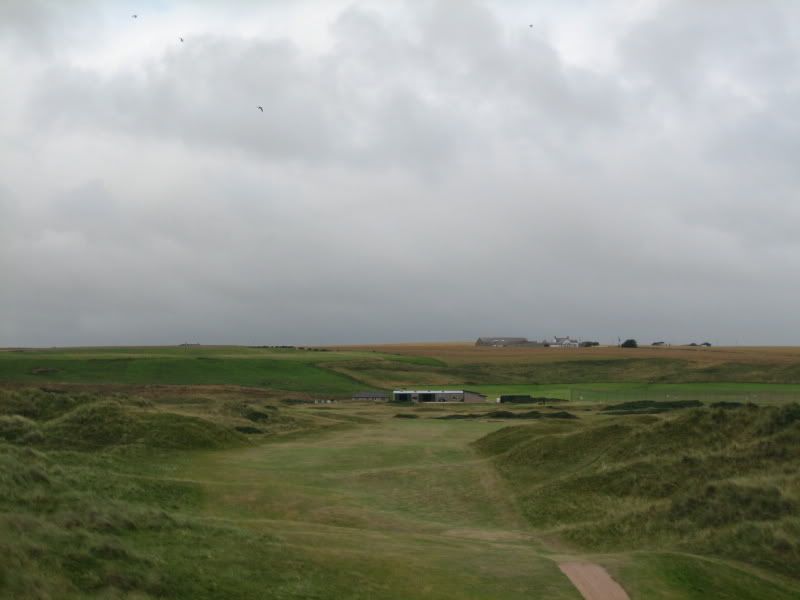
At roughly 170 yards in, the approach still looks like a trouble free negotiation, and from 200+ yards out, the player may be tempted to give it a go.
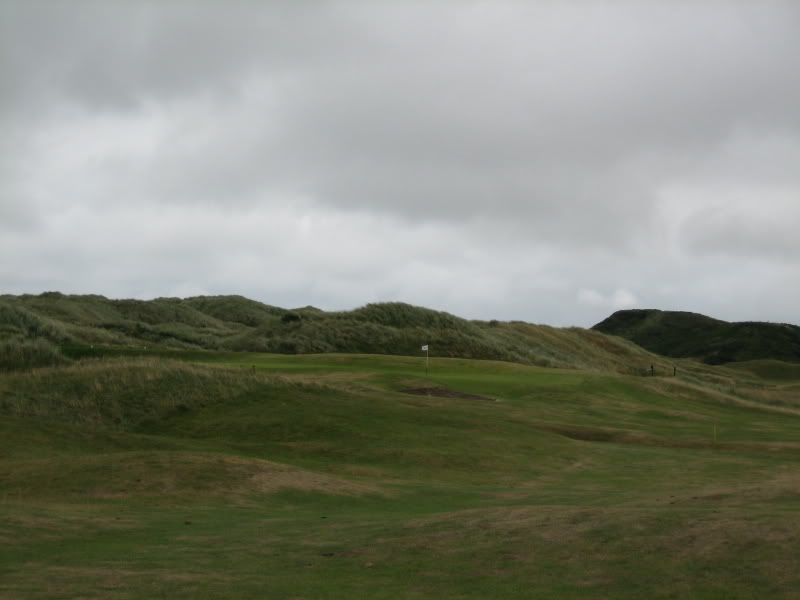
But shortly, the trouble is revealed. Even a marginally struck approach will find either the burn, or the will be deflected off the front of the green and bound down the hill leaving a dicey pitch.
 #13 - 540 yards
#13 - 540 yardsAgain, but for the whipping winds, the tee shot gets you moving out into the hole without much difficulty as you play back toward the Hawklaw.

Playing against the breeze, the burn, at 300 yards out, is not a big consideration off the tee. But any miscue off the tee, and the burn will heavily influence the play of the hole.
In the distance, you can begin to make out the large hill that protects the 13th Green
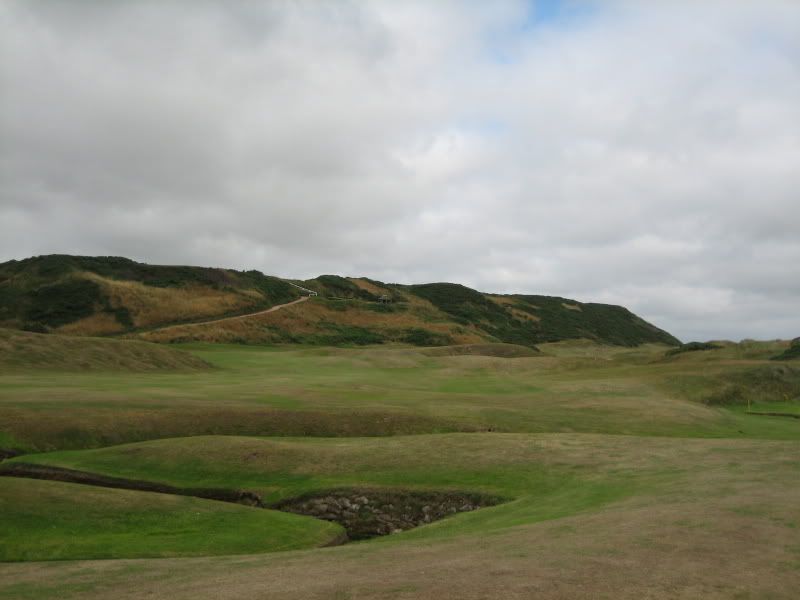
The primary feature of the hole is the massive earthwork that obscures the right and center of the green. As the next 3 pictures illustrate, the further left the player plays his approach, the more of the flagstick he is able to discern, which helps the psychology of the shot immeasurably.
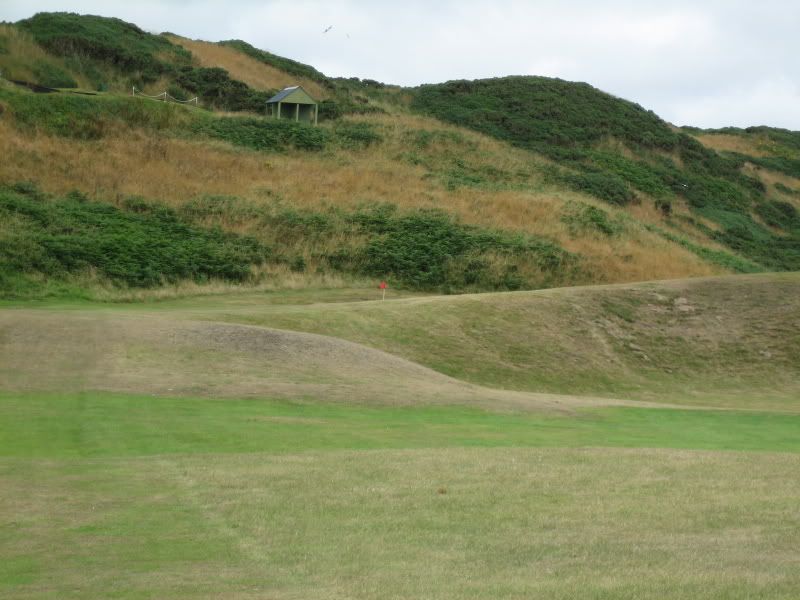
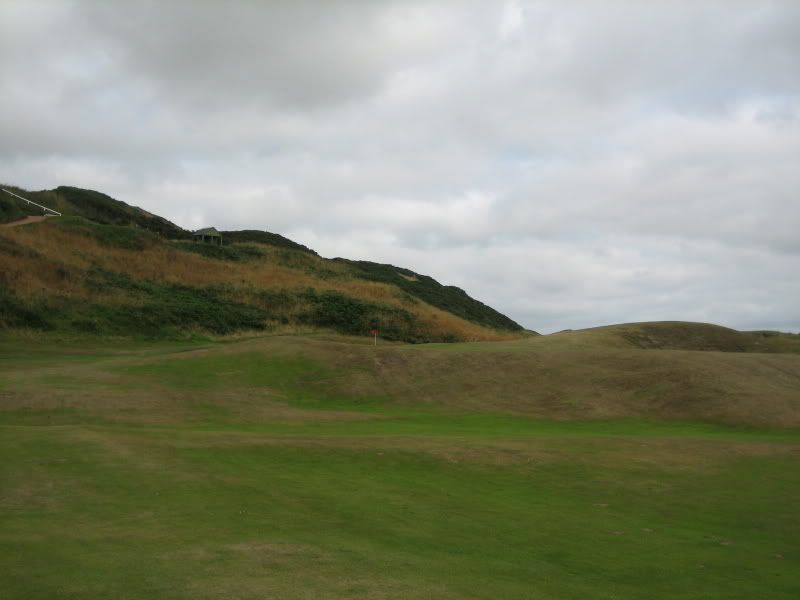
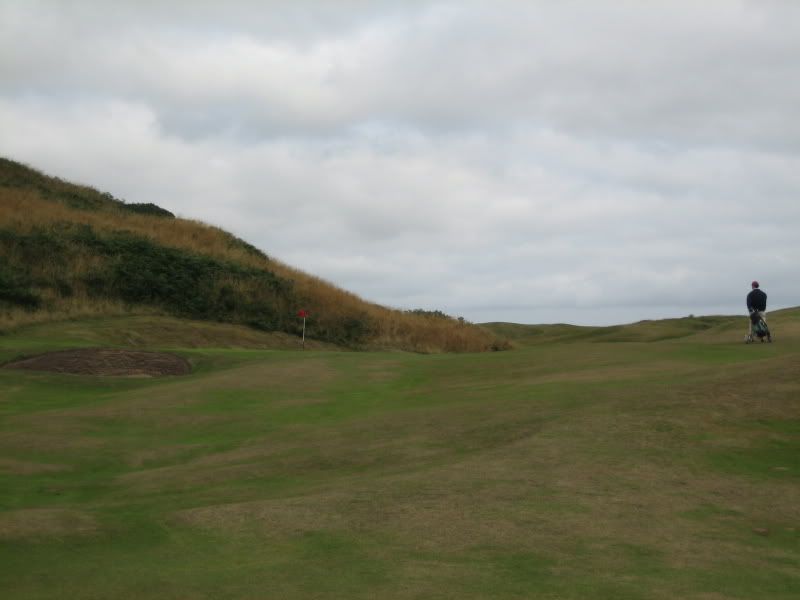
Finally, a shot looking Back on #13 from 10 Tee:
